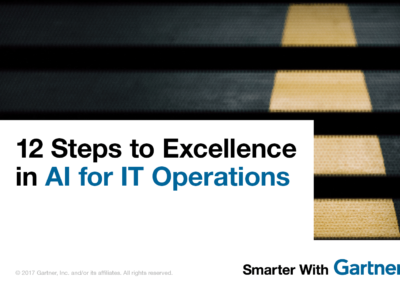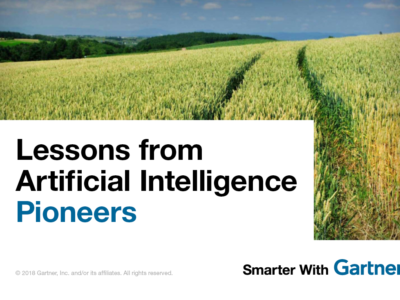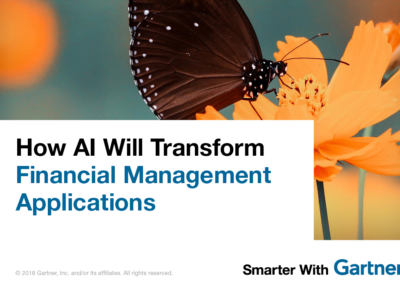Five technology shifts will catalyze transitions in marketing strategies and organizations by 2020.
The rapidly evolving world of technology is forcing marketers to take a good look at how certain devices and platforms will affect consumer interactions. The recent uptick in the popularity of augmented reality (AR) and increased options for consumers in the world of voice-activated digital assistants such as Amazon Echo and Google Home are marketing challenges, but also opportunities. Five technology-driven changes in the marketing environment will lead to an outcome that is different from what marketers may have previously expected.
“Marketing leaders must tune their antennas to the signals of change and resist accepted wisdom if they aim to benefit from what technology transformation has in store for them,” said Charles Golvin, research director, Gartner for Marketers.
1. 20% of brands will abandon their mobile apps by 2019
Despite significant investment and hopes for positive ROI, mobile applications are not paying off for many brands. Competition for consumers is high amid the millions of options offered in app stores, and apps are expensive to support. Compelling alternatives such as progressive web apps mean the branded app economy is poised for change. By the end of 2018, the cost of marketing a non-game application as a function of the number of downloads will at least double.
Action:
Assess your mobile marketing strategy against the “mobile-centric” and “mobile-extender” strategies to evaluate if you’ve correctly prioritized mobile marketing efforts. Measure app performance against original ROI calculations to evaluate continued app investment levels.
2. Ad blocking will increase advertising effectiveness by 50% by 2019
Brands and consumers alike are caught between ad blockers and publishers. Today’s ad blockers are not very selective about which ads they block, and publishers try to engineer workarounds to show their ads. Unconventional strategies will emerge as a result of the unsustainable cat-and-mouse game between ad-blocking software and publishers.
Read More: Gartner CMO Spend Survey 2016-2017 [Infographic]
Some media platforms are using privacy settings as a differentiator, and ad blockers have realized that the audience they’ve cultivated is valuable to advertisers. Users will be able to express their preferences, advertisers will increase their ability to interpret those implicit statements and ad effectiveness will increase.
Action:
Elevate the importance of choice in consumer experience and communicate with users about what data is collected about them and how sharing data benefits them. Segment your audience according to customers’ privacy preferences.
3. 100 million consumers will shop in augmented reality by 2020
Retailers and brand marketers deploy AR applications to enhance the shopping experience. The L’Oréal Paris MakeupGenius app enables consumers to “try on” products, test curated looks and purchase products from within the app. Marketers are developing AR experiences primarily for smartphones; head-mounted displays (HMDs) will remain a niche market for AR.
The heightened emphasis on customer experience means that by the end of 2017, one in five leading global retail brands will use AR to enhance the shopping process, resulting in dramatically higher levels of customer engagement.
Action:
Engage customers in a way that is unique to the AR experience. Don’t duplicate an experience that customers can get better, faster or more conveniently via another medium.
4. Virtual agents will participate in a majority of commercial interactions by 2020
Digital platform providers such as Google, Apple, Facebook, Amazon, IBM and Microsoft are creating new business ecosystems through cutting-edge conversational artificial intelligence (AI) platforms to attract consumers. As marketers experience pressure to invest in virtual agents as part of the next wave of customer experience design, they’ll struggle with the complexity of how to train and deploy AI agents effectively. Because virtual personal assistants (VPAs) will mediate access to consumers, agent-to-agent proxy web interactions will be crucial marketing elements that marketers will need to consider.
Action:
Develop an overall understanding of the broad role of AI in marketing. Pay particular attention to how interactions among AI systems — both within and outside your organization — might disrupt marketing at many levels.
5. 20% of Global 2000 CIOs will report into marketing by 2020
Marketing organizations have primary or substantial responsibility for driving company growth. To note, CMO marketing technology budgets are nearing CIOs’ level of spending on enterprise IT. The marketing mandate is broad and highly dependent on technology. Eighty-one percent of organizations now have a chief marketing technologist (CMT) in name or role equivalent.
Read More: Gartner CMO Spend Survey 2016-2017 Shows Marketing Budgets Continue to Climb
Marriott International and Delta Dental are examples of companies at which the corporate IT function now reports into the CMO. These companies see this strategy as a way to better align IT with both the revenue engine and customer experience. This reporting structure will not make sense for most large companies because enterprise IT is often focused on architecture, procurement, delivery, security and administration of infrastructure — functions that don’t naturally fall under a CMO’s purview. As marketing begins to own or drive customer-facing and revenue-centered functions, the CMT and CIO roles will begin to merge.
Action:
To align the CMO with IT, review the marketing technology stack, governance and operations relative to the corporate IT stack. Assess the current alignment among IT, marketing and overall business objectives.
Get Smarter
Client Research
Gartner for Marketers clients can read more in Predicts 2017: Marketers, Expect the Unexpected by Charles Golvin. This research is part of the Gartner Special Report “Predicts 2017: Lead, Follow, or Get Out of the Way: A Gartner Trend Insight Report,” a collection of research that focuses on predictions that allow companies to plan strategically for both expected and unexpected change.
Gartner Digital Marketing Conference
Learn more about digital marketing trends at the Gartner Digital Marketing Conference 2017, May 10-12, in San Diego, CA. Follow news and updates from the event on Twitter using #GartnerDMC.
CMO Spend Survey (Complimentary)
Learn how and where companies are spending marketing dollars in the Gartner 2016-2017 CMO Spend Survey.
CMO Spend Survey (Client research)
Results are in: Marketing budgets are up for 2017. Learn how and where companies are spending marketing dollars with results from the Gartner 2016-2017 CMO Spend Survey.










